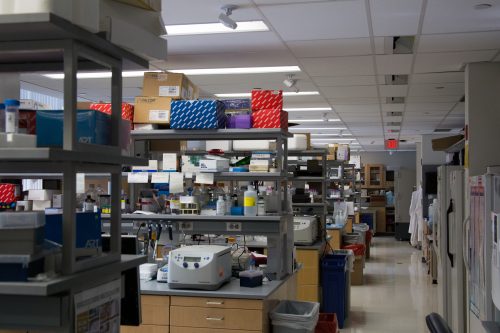Public health officials say that the drug methadone, dispensed daily, is one of the key tools for combatting the opioid epidemic in the United States. Every day, according to the National Institute on Drug Abuse, more than 130 people in the U.S. die following an opioid overdose, and the outbreak is on the rise.
In the U.S., methadone for opioid addiction can only be dispensed through an opioid treatment program (OTP) certified by the Substance Abuse and Mental Health Services Administration (SAMHSA). This requisite restricts the number of clinics offering methadone for opioid addiction.
These conditions, coupled with his personal experience, inspired Paul Joudrey, a primary care physician and health services researcher who focuses on improving access to evidence-based treatments for addiction, to investigate drive times to OTPs in rural and urban counties in the five states with the highest county-rates of opioid-related deaths: Indiana, Kentucky, Ohio, Virginia, and West Virginia.
As Joudrey explains, “When I was training as a resident physician, I included work at a methadone clinic in the South Bronx in New York City… I would meet patients who… [talked] about how far they had to travel in order to receive methadone for their opioid use disorder… In addition, I grew up in…a small city in North Central Ohio, where the opioid epidemic…had a severe impact… and there was no methadone clinic.”
In Joudrey’s study and research letter, “Barrier to Rural Opioid Treatment: Driving Distance to Methadone Clinics” published October 1, 2019 in the Journal of the American Medical Association, he and a team of Yale researchers used geospatial analysis, a technology associated with Google Maps, to calculate the minimum drive times from a county to the nearest OTP or methadone clinic.
One of the challenges of this study was “identifying the best origin for the drive times,” says Joudrey. Ultimately, the researchers, used data from the Census Bureau to choose population weighted center points of counties.
The researchers found that among all counties, the mean drive time to the nearest OTP was 37.3 minutes—7.8 minutes in urban counties and 49.1 minutes in rural counties— while the mean drive time to the nearest FQHC was 15.8 minutes.
Essentially, they discovered that individuals in rural counties face exceedingly longer drive times to obtain methadone compared to individuals from urban counties. Additionally, Joudrey demonstrated that these long drive times could be substantially reduced by allowing methadone prescribing to occur at federally qualified health centers (FQHCs), which are simply community-based primary care clinics.
Asked why the study’s findings are significant, Joudrey replied, “We are still in the middle of a drug overdose epidemic… [that’s] had a unique impact in rural communities… So expanding access to treatment and ensuring access to evidence-based treatment in rural communities is critical and urgent.”
Two other drugs, buprenorphine and naltrexone, can help some people combat opioid addiction, and they do not have to be dispensed through a SAMHSA-certified OTP. But according to Joudrey, access to methadone remains crucial.
“All three of these medications need to be available in every community in order to reduce drug overdose deaths in the United States.” This is partly due to the fact that, just like for any other disease, one medication may work for one person, but it may not work for another. Joudrey continues, “The National Academy of Sciences has called for ensuring that all communities have access to these medications…methadone included.”
Potential solutions to make methadone more accessible involve allowing primary care clinics to prescribe methadone to people with opioid use disorder, policies that Canada and Australia have adopted, building more opioid treatment programs, or opening medication units— OTPs that only dispense medication.
However, as Joudrey discloses, “Our belief [the authors of the research letter]… and that of most experts… is that allowing methadone to be integrated into primary care clinics would be the most advantageous for patient care.”
Next, Joudrey is interested to look at how pharmacy-based dispensing of methadone could improve the availability of methadone in rural communities. Australia and Canada both utilize this system, whereby there is a primary care clinic that prescribes the medication that then has an affiliation with a community pharmacy, which dispenses locally.
“The big picture here is that there is growing acknowledgement among states that we need to find a way to make methadone more available,” Joudrey concludes. “We’re pleased that our letter is one component of raising that message … [But] there’s lots of work to be done.”

